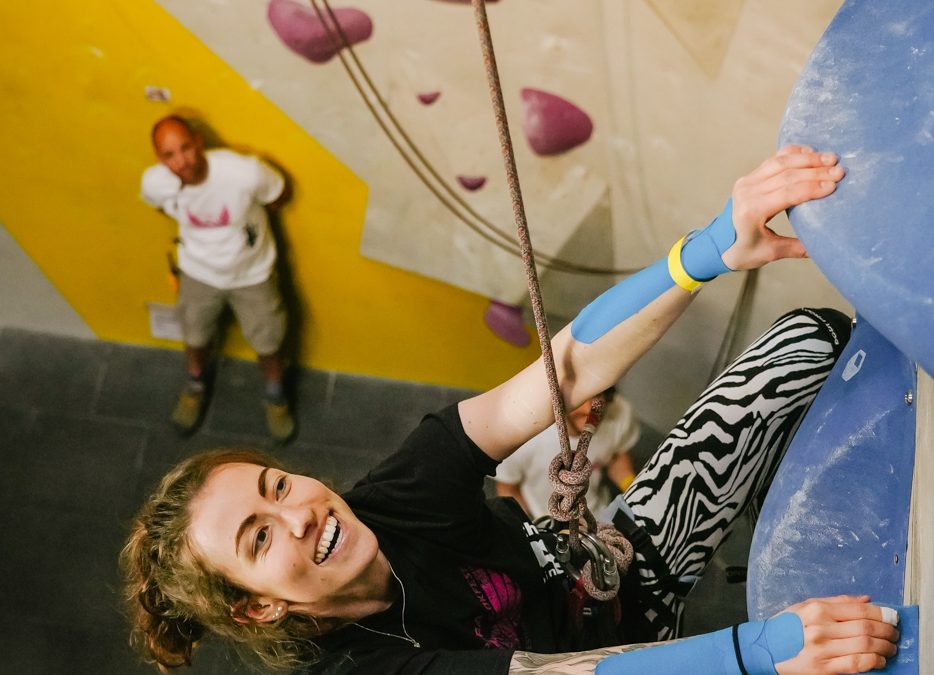My name is Jeantique, I am a 25 year old Londoner, and I am a paraclimber. I have a condition called Ehlers-Danlos Syndrome (EDS), which is a genetic connective tissue disorder found in around 1 in every 2,500 people. The main symptoms of my condition include joint instability, frequent dislocations and subluxations, easy bruising, soft skin that tears easily, and chronic pain. Although, because connective tissue is found throughout the whole body, people with EDS often have a lot of other health conditions, including problems with the bladder, digestive system, heart, autonomic nervous system, skin, and more.
Currently there is no cure for EDS, so it’s about finding ways to manage the condition in day to day life. For me, this has come down to a fine balance of medications, lifestyle changes, diet, physiotherapy, various aids and braces, pacing, hot and cold therapy and psychology input. However, out of all the ways I try to manage my condition, the most helpful strategy of all has been something I stumbled upon accidentally: climbing.
Of course, having a condition that makes my joints supple and unstable doesn’t make climbing sound like the most intuitive activity to take up! However, from the first day I got on a bouldering wall almost two years ago, I fell in love with the sport – and it’s become a pivotal part of my life ever since. Unfortunately, having EDS does mean that I am more prone to injury, dislocations, sprains, strains, and the rest of it. But in the long term, climbing is helping me gain the strength that my muscles need to support my lax joints – increasing my joint stability, and reducing my pain. In this way, climbing is actually my greatest form of physio.
Still, in order to climb safely with EDS, there are certain measures I have to take on the wall. Besides knee pads, belayer glasses, reducing impact and risk, and other little tips, tricks and compensatory strategies, finding Rock Tape has been a real game-changer for me. When my physiotherapist initially introduced me to the tape – and secured my knees, wrists and shoulders for the first time – I felt like a new woman! Being so used to joints that pop out whenever they feel like it, knee caps that move around of their own accord, and wrists that are so unstable I can barely open a jar, having my joints taped up felt like a dream. Finally my limbs were staying in place and I wasn’t getting injured every time I got on a wall!
The thing about Rock Tape is that it’s thin and subtle, so it doesn’t get in the way like knee braces and wrist supports do. However, it’s also extremely strong, and can be cut, stretched and used for stabilising pretty much any part of the body. When I’m taped up, my joints are provided with that little bit of extra support, so my risk of injury is greatly reduced and my ability to train at my best is multiplied. Finding Rock Tape has meant that I am able to climb at my hardest, and push myself to limits I didn’t know I had. It has given me the confidence to go for riskier moves, take greater impact, and train for longer, and harder, and better. When injured, Rock Tape also improves blood flow, speeding up healing and reducing pain to the point of injury – so I can get back on the wall where I belong as quickly as possible. Now I am at a stage in my climbing journey where I’m ready to try out for the GB paraclimbing team in 2020, less than a year away. No matter how much tape it takes to get me there, competing for my country and representing EDS in the paraclimbing world is my ultimate end goal!
Jeantique
@jeantique_climbs
photo credits Ed Wong/ @cartooneddy
